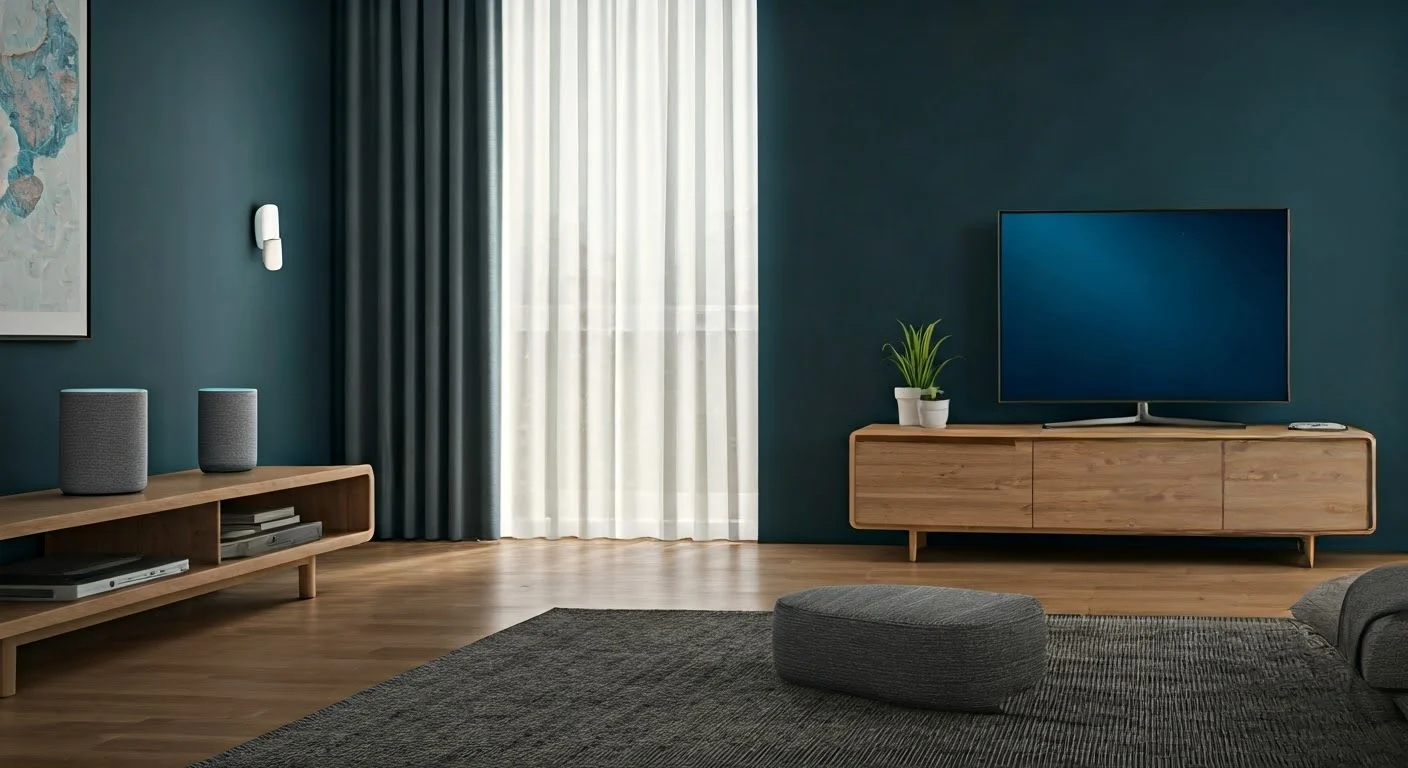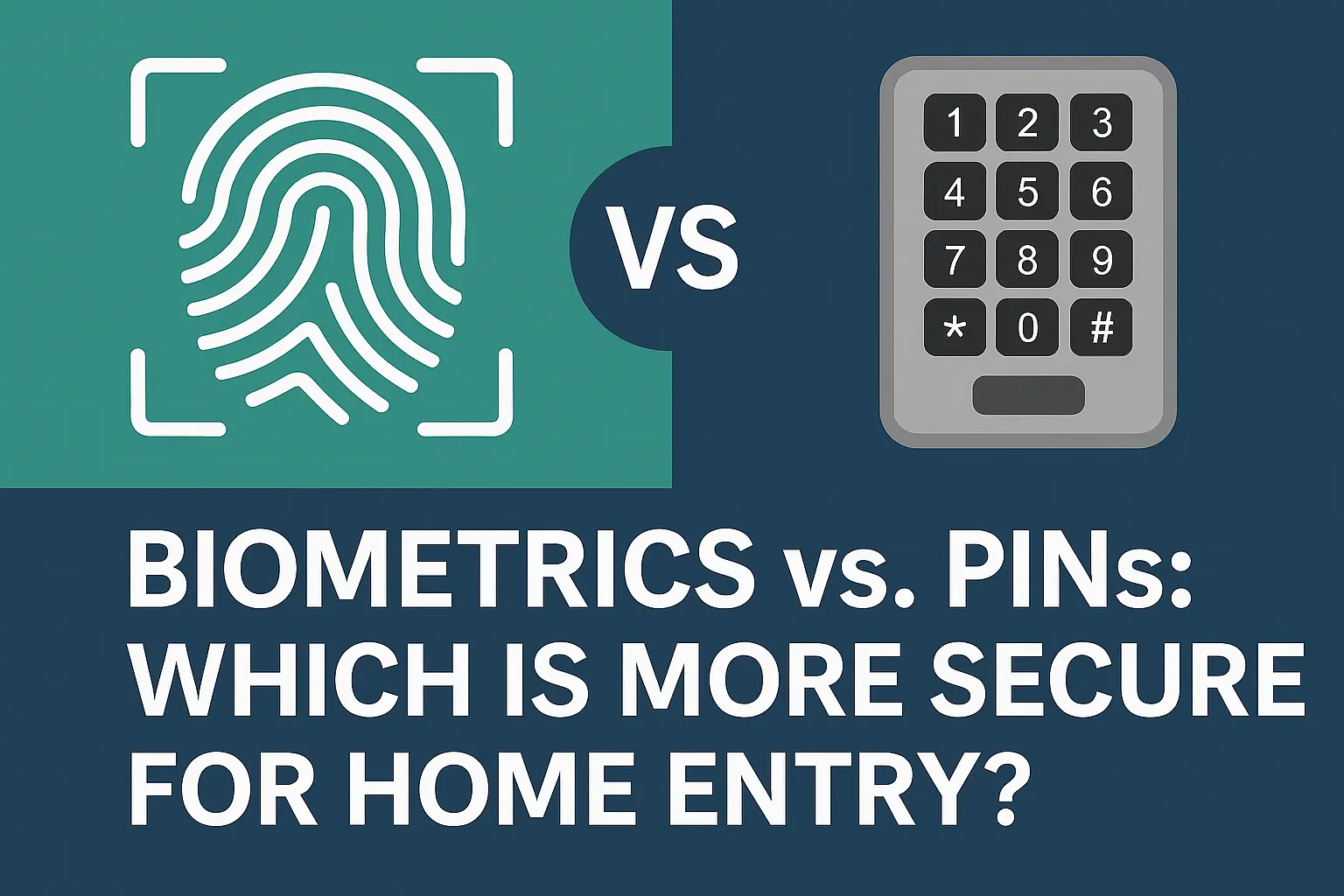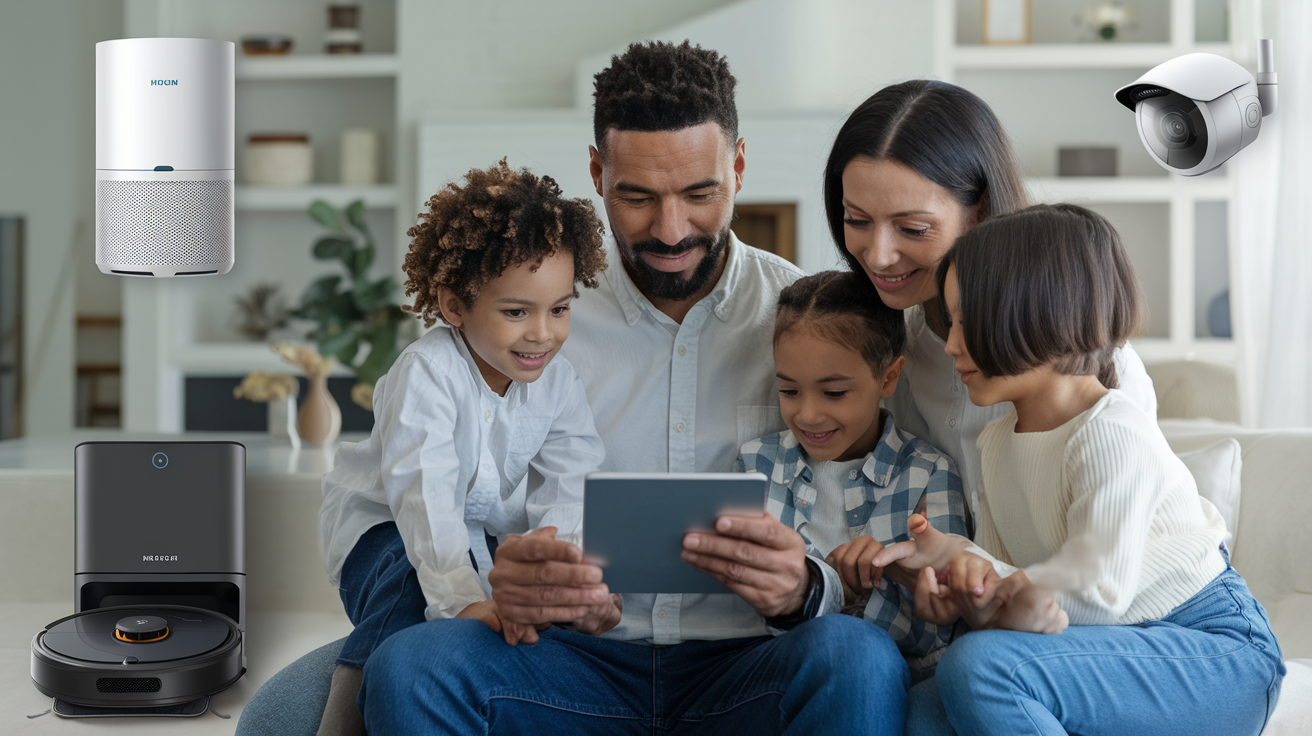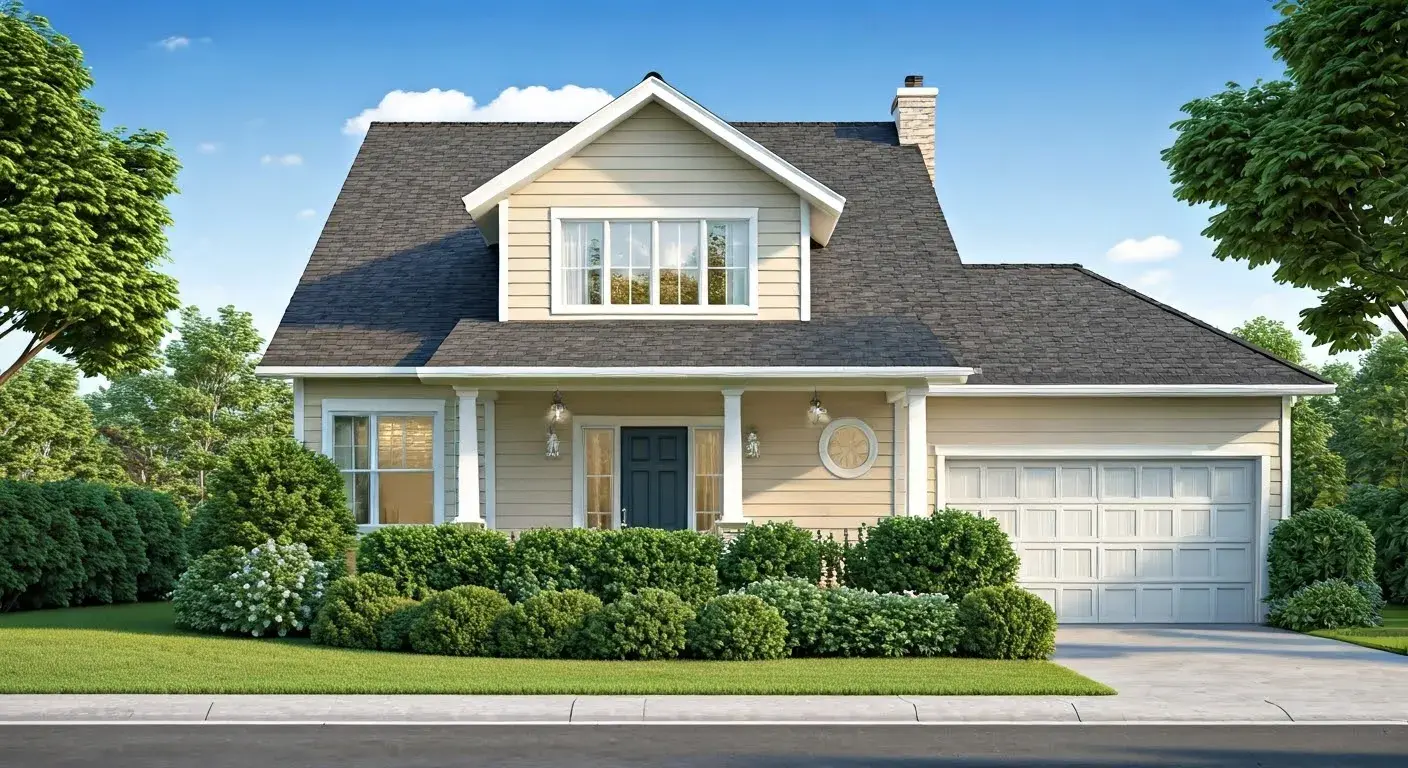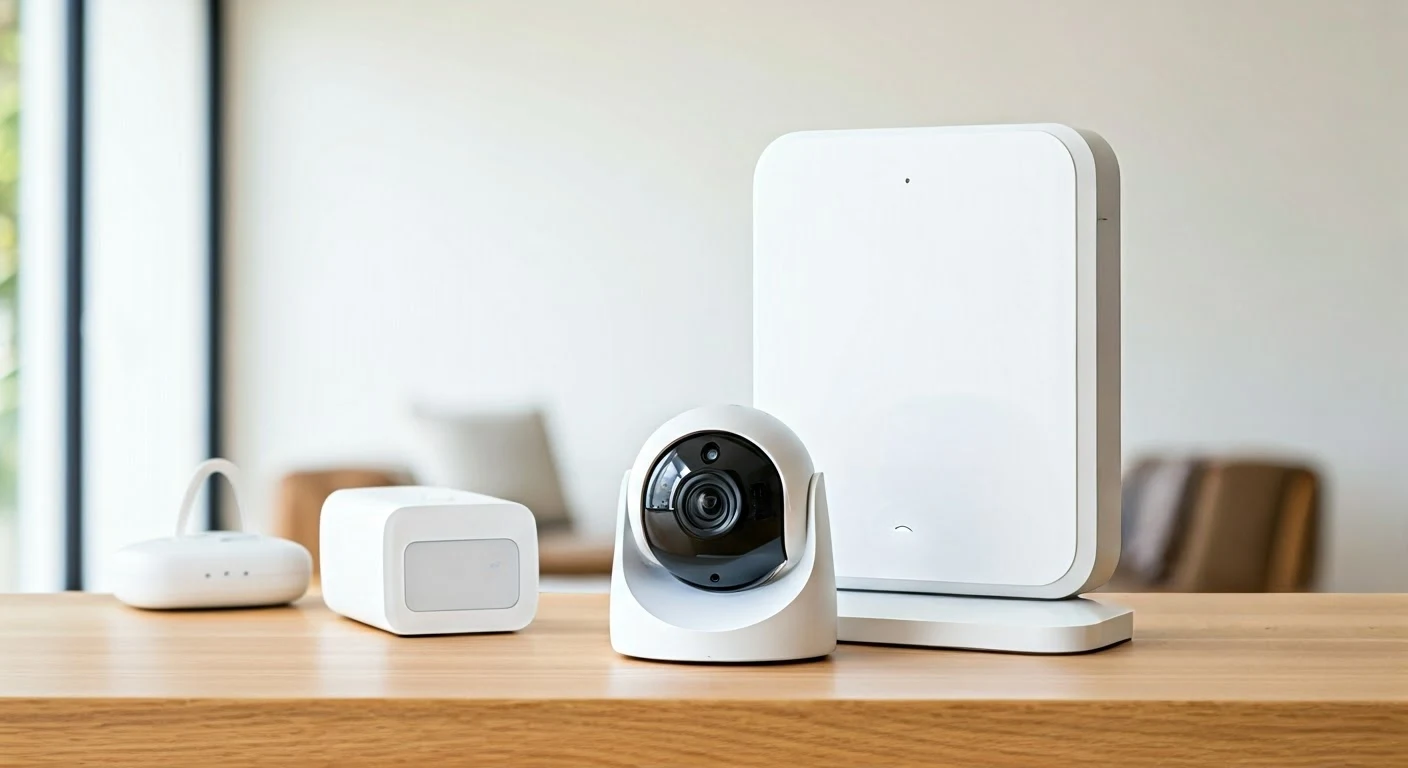Imagine living in a home where technology blends perfectly with your everyday life. This is what a smart home offers. It makes your daily tasks easier and understands your needs. With home automation, you can manage everything using a mobile app. This app lets you control lighting, temperature, security, and entertainment. You can do all this with great ease and accuracy.
Understanding the Basics of Smart Home Automation
At its heart, smart home automation means connecting different devices and appliances in your home to a main network known as the Internet of Things (IoT). This network lets your smart devices talk to each other and you, the homeowner. Instead of working alone, your lights, thermostat, security system, and kitchen appliances can function together.
Think about coming home to a house that is well-lit and warmed to your favorite temperature, all without you doing anything. This kind of automation works through voice control using smart speakers or by following schedules made just for you. There are endless possibilities, as new smart devices and features keep coming out. This gives you even more options to customize and control your home environment.
The Evolution of Home Automation Technology
Early home automation was simple. It often used basic timers and sensors. These systems could turn lights on and off at set times. However, they were not flexible or connected like the smart homes we have today.
The rise of the internet and wireless technology changed home automation forever. Now, advanced hubs act as the system's brain. They connect many devices and allow them to communicate easily. This connection has made smart home experiences much better and easier to use.
Today, we can control smart homes from our smartphones. They can also work with voice assistants like Amazon Alexa and Google Assistant. This brings a new level of convenience and control over our homes.
Key Components of a Smart Home System
A smart home system has many connected parts. For example, smart bulbs can take the place of regular light bulbs. They let you dim the lights, change colors, and set schedules. You can control these bulbs one by one or group them for unique lighting in your home.
Security is also very important for smart homes. Smart locks allow you to enter your home without a key. You can manage who enters your home from a distance. Plus, adding security cameras and motion sensors can keep your home safe. They can send alerts to your smartphone if something unusual happens.
A smart thermostat learns what temperature you like. It changes settings on its own to keep you comfortable and save energy. These devices can help lower your energy use and cut down your bills by watching how you heat and cool your home.
How Smart Home Automation Systems Work?
The wonder of a smart home comes from how its parts connect easily through the IoT. Every device, such as your smart lights and security system, talks to the central hub. This happens either by using Wi-Fi or Bluetooth without wires, or through wired connections.
The hub works as the main control center. It gets instructions from you, whether it's through a mobile app, voice commands, or set schedules. Then, it sends these commands to the right devices. By managing this complex network of communication, the smart home platform lets all your devices work together smoothly.
The Role of IoT in Smart Homes
The Internet of Things, or IoT, is key for a smart home system. It connects many smart devices into one network. This connection lets the devices talk to each other and you. Because of this, your home can work together and help with daily tasks.
To keep these devices communicating well, many smart home systems use a mesh network. This type of network uses several points instead of just one router. This means you get strong signals all around your home. Good connectivity is important for controlling your smart devices easily.
Whether you're changing the temperature, switching on the lights, or checking security cameras, a strong IoT network makes sure your requests are completed without delays. The more smart devices you add, the more you need a steady and strong IoT network to keep everything working well.
Connectivity and Compatibility: Ensuring Your Devices Communicate
One important thing to think about when creating a smart home is how well your devices can talk to each other. Different communication methods decide how smart home tools work together. Wi-Fi, Bluetooth, and Zigbee are some of the most popular options. It's important to pick a central hub that works with the methods your devices use.
Wi-Fi is known for its rapid speed and long range. It works great for devices that need a lot of data, like smart TVs and streaming devices. Still, it can use a lot of battery power, which can be a problem for devices that run on batteries. Bluetooth is great for devices that use less energy, but it doesn’t work over long distances.
Zigbee strikes a good balance between saving energy and having a decent range. This makes it a great pick for devices that need to communicate often, like sensors and smart bulbs. By knowing the pros and cons of each method, you can choose the right devices for your smart home setup.
Setting Up Your Smart Home Automation System
Building your smart home starts with choosing the right platform. Companies like Google (Google Home), Amazon (Alexa), and Apple (HomeKit) provide strong systems with many compatible devices. Your choice depends on personal preference, the tech you already use, and the features you want.
After you pick your smart home platform, the next step is to install your hub and download the mobile app. Then, you can connect devices easily, usually by scanning a QR code or following the app instructions. Many platforms also work with other devices and services, making your smart home even better.
Choosing the Right Platform for Your Needs
Choosing a smart home platform can be confusing since there are so many options available. It's important to think about what you need and what is most important to you before making a decision. If you already use Google services a lot, then Google Home could be the best choice. It works well with devices like Nest thermostats and connects easily with Google Assistant.
If you prefer something more versatile, Amazon Alexa is a great option. It has many compatible devices and voice control features. However, if you're looking for privacy and security, you might consider Apple HomeKit. While it may offer fewer devices, it focuses on keeping your data safe.
In the end, the best smart home platform is the one that fits well with your current tech, provides the features you want, and works with the devices you want to use.
Step-by-Step Guide to Installing Smart Devices
Once you pick a smart home platform, the next step is to install your devices. Most smart home devices are easy to install and do not need much technical skill.
For example, to set up smart lights, you just need to change your regular bulbs with smart ones and connect them to your home's Wi-Fi using the mobile app. For a smart plug, simply plug it into a wall outlet and link it with your smart home platform.
However, for devices like video doorbells, the setup takes a few more steps. Here is a simple guide:
- Charge the device: Make sure the video doorbell is fully charged before you start.
- Install the mounting plate: Use the screws and anchors to attach the plate near your front door.
- Connect the doorbell: Attach the doorbell to the mounting plate tightly.
- Connect to Wi-Fi: Use the mobile app to connect the doorbell to your home Wi-Fi.
- Test the doorbell: After connecting, test the doorbell to make sure it works correctly.
The Benefits of Integrating Smart Home Automation
Investing in smart home tech is more than just buying gadgets. It can change the way you live by making your life easier, and more efficient, and giving you peace of mind. Picture this: you wake up to a softly lit home and the smell of fresh coffee, all set up by your smart home system.
Besides comfort, smart home automation also helps you save energy by using automated schedules. It can keep your home secure with remote monitoring and alerts that come to you in real time. Whether you love tech or want to make your life simpler, the benefits of home automation are clear.
Enhancing Convenience and Comfort
Smart home automation gives you full control over your space. It makes comfort and convenience easy. Picture walking into a room and simply adjusting the lights with your voice. You can do this thanks to a smart speaker. No need to search for light switches in the dark or endure bright ceiling lights.
A smart display can enhance your experience even more. You can manage other smart devices, like your thermostat or security cameras, with just a few taps on the screen. You can preheat your oven while coming home from work or see who’s at the front door without getting up from your couch.
The best part of a smart home is how it can foresee your needs and handle tasks. This saves you time and mental energy for the things that matter. Enjoy a personalized home that changes with your lifestyle.
Boosting Energy Efficiency and Savings
In today's world, many people care more about the environment. Smart home technology is helping us save energy while keeping our homes comfortable. Smart thermostats are a great example. They learn what temperature you like and adjust by themselves. This means your home gets heated or cooled just right.
You can choose the temperature you want, and the smart thermostat will manage everything else. It also considers if anyone is home and the weather outside. You won't waste energy heating or cooling a home that is empty anymore. By changing the temperature to just a few degrees Fahrenheit while you are away or sleeping, you can save a lot of energy.
These energy savings help you save money. Your utility bills go down, and you can lower your carbon footprint. Use smart home technology to live a more sustainable life with smart energy management.
Addressing Security Concerns in Smart Home Automation
While smart home automation can be very handy and efficient, it is normal to worry about safety. A connected home might be at risk for cyber attacks. Still, by taking the right steps, you can lower these risks and enjoy a smarter and safer home.
Choose well-known brands that are known for security. Pick devices that have features like two-factor authentication. Make sure your home network is safe with a strong password and updated firmware. Regularly update your devices with the newest security fixes. By focusing on cybersecurity, you can feel good knowing your home and data are safe.
Best Practices for Securing Your Smart Home
Securing your smart home needs a strong plan. Start by making sure your Wi-Fi network has a password that is strong and unique. Keep your router updated with the latest firmware to stay protected. Always use network encryption, ideally, WPA2 or WPA3, to add an extra level of safety.
When you pick smart devices, go for well-known brands that care about security. Choose devices that encrypt your data when it is being sent and when it is stored. Be careful with devices that come with default passwords, and always change them right after you install them. Read the privacy policies of the smart home platforms and device makers to know how your data is collected and used.
Pay attention to how your cloud storage works. While it is easy to access your data and settings with cloud storage, you should know about the security measures of the service provider. Pick platforms and devices that offer strong encryption for your data stored in the cloud.
The Future of Smart Home Security Features
The smart home security scene keeps changing, bringing new tech for better protection. Biometrics like fingerprint scanning and facial recognition are being used more in smart locks and security systems. This gives users extra safety by confirming their identity.
Artificial intelligence (AI) is also important for the future of smart home security. AI cameras can tell the difference between familiar faces and possible intruders. This helps cut down on false alarms and improves threat detection. Smart AI can learn daily routines and spot odd changes that might mean a security issue.
As technology grows, we will see more advanced and helpful security features added to our smart homes. These improvements aim to make our living spaces safer by blending security smoothly into our connected homes.
Smart Home Automation for Different Living Spaces
The charm of smart home automation is in its ability to fit different homes. It changes how we use our houses. It works well in all areas, from the fun living room to the kitchen where we cook.
Think about being able to control the lights in your living room. You can set the mood for movie night. Or you could use voice commands to change the temperature without pausing your show. In the kitchen, picture a smart fridge that helps you make shopping lists. Also, think about a smart oven that starts preheating just by your voice command.
Transforming the Living Room with Smart Entertainment
The living room is the heart of a home. It becomes a place full of fun with smart tech. Picture a Friday night: just say a command to your voice assistant. The smart TV will turn on and start your favorite movie on Netflix. Meanwhile, the smart lighting dims to make the room feel cozy like a movie theater.
You won't need to search for several remotes or adjust the lights yourself anymore. Your voice is now the best remote! You can change the volume, switch between streaming services, and control other smart home devices while relaxing on your couch.
You can easily change from a movie night to a party too. With a few taps on your smartphone, you can change the music and lights to create the right vibe. Smart entertainment makes it simple to set up the living room for any mood or event.
Innovations in Smart Kitchen Appliances
The kitchen, once a domain of purely manual tasks, now embraces innovation with the advent of intelligent appliances. Picture this: a smart refrigerator keeps track of your groceries, reminding you to replenish staples and suggesting recipes based on available ingredients.
Meanwhile, a smart oven preheats on your command while you browse recipes on its intuitive touchscreen display. Imagine receiving notifications when your dish is perfectly cooked or using a recipe app to send cooking instructions directly to your oven.
Here's a glimpse into the exciting world of smart kitchen appliances:
| Appliance | Features |
| Smart Refrigerator | Inventory tracking, expiration alerts, recipe suggestions, smart home integration |
| Smart Oven | Remote preheating, voice control, automatic cooking programs, recipe integration |
| Smart Dishwasher | Customized wash cycles, remote monitoring, leak detection, delayed start options |
These intelligent appliances transform the cooking experience, simplifying meal preparation and freeing up valuable time.
Troubleshooting Common Issues with Smart Home Systems
Smart home systems are made to be easy to use, but sometimes they can have problems. Most of the time, these problems come from connection issues. Before you reach out for help, try turning your devices and router off and on again. Also, make sure your devices are close enough to the Wi-Fi signal and that your network isn’t too busy. These steps can fix many connection problems.
Taking care of your devices is important for your smart home to work well. Make sure to check for and install firmware updates regularly. These updates can fix bugs and improve performance. If you still have issues, feel free to contact the user support from the manufacturer or look for help in online forums that focus on your specific smart home platform.
Solving Connectivity Problems
In our smart homes, a strong Wi-Fi signal is very important. A lot of people face issues with connectivity. This often shows up as devices that don't respond or slow performance. If you have these problems, start by seeing how close your devices are to the router. Walls and other things can block the Wi-Fi signal.
You might want to move your router to a more central spot to get better coverage. Another option is to get a mesh network. This uses several access points to make sure the signal is strong all over your home. Don't forget to update your router's firmware to get the latest upgrades and security fixes.
If you still have issues, try turning off and on your router and any devices that have problems. This simple fix can often solve small issues. If the problems continue, you may need to contact your internet service provider. They can help you check for any bigger issues. You can also get help from your router's manufacturer.
Updating and Maintaining Your Smart Home Devices
Just like computers and smartphones, smart home devices need regular updates to work well. Manufacturers often provide firmware updates. These updates fix bugs, improve how the device works, and can even add new features. You should watch for update notifications in your smart home app or check the manufacturer's website from time to time.
It's also very important to keep devices compatible. As technology changes, older devices may not work with the latest features or systems. Before adding new devices to your network, check if they work with your current hub or smart home platform.
If you keep having problems or have questions about how a device works, you should contact tech support. Most manufacturers have online resources, FAQs, and options for phone or chat support which can help solve your issues and answer your questions.
Conclusion
In conclusion, using smart home automation systems can change how you live. They offer great convenience, save energy, and improve security. With IoT technology, your devices can work together easily. This not only makes your life better but can also lower your energy bills. By picking the right platform and following installation steps, you can turn your home into a comfortable and innovative place. As smart home features develop, know that these systems can make your daily life easier and more advanced. Simplify your life today with smart home automation.
